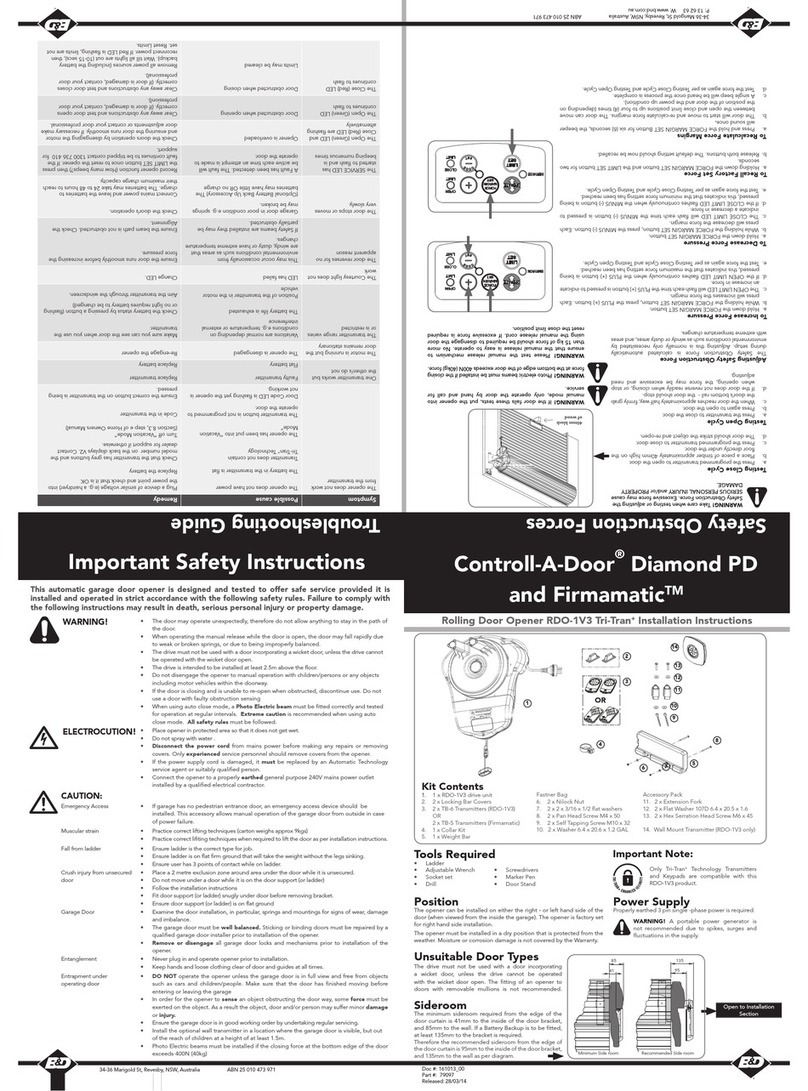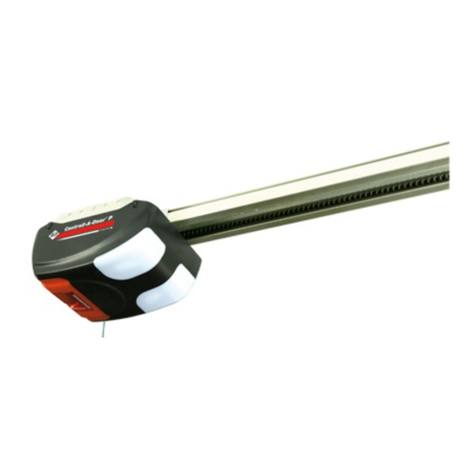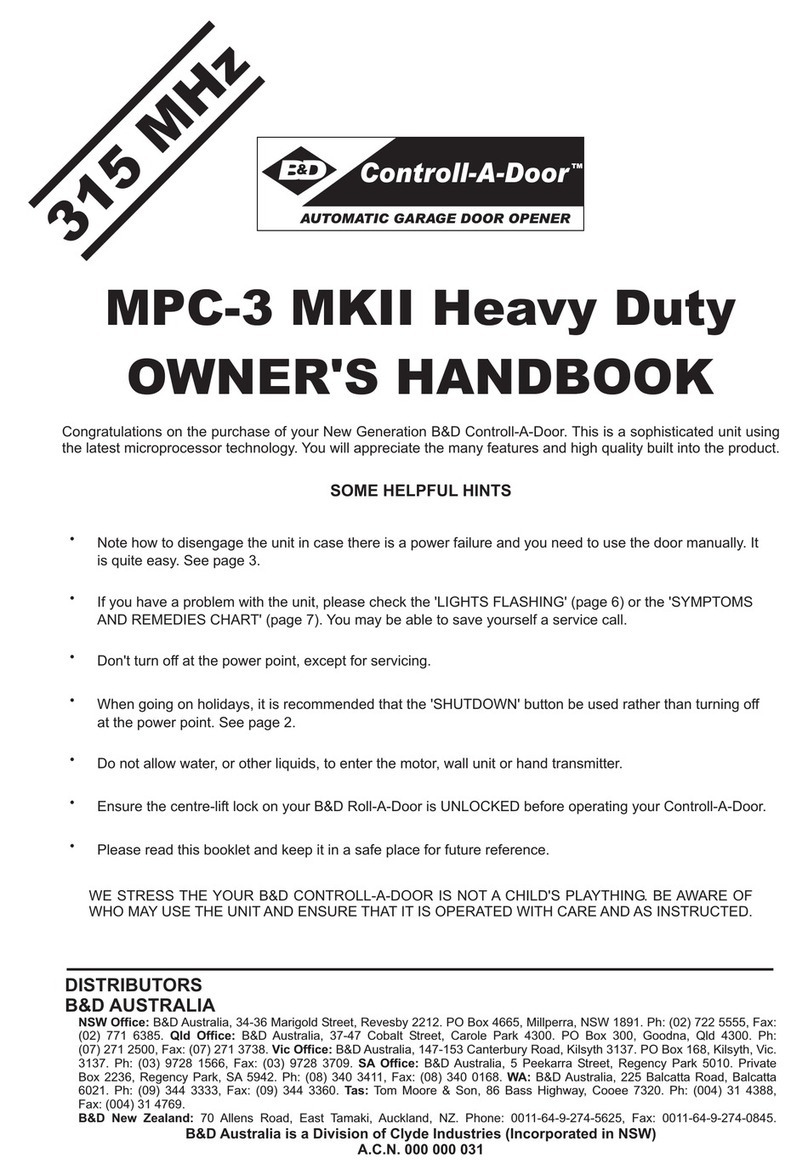Thank you for choosing a Controll-A-Door® S automatic
garage door opener, designed and developed in Australia
by B&D Doors.
The technically advanced construction of this opener
ensures you enjoy the following benefits:
Warranty
Five (5) year/10,000 cycles full parts and labour warranty
on motor, electronics and mechanical components of
the opener when installed by an Approved B&D Dealer
(conditions such as annual garage door servicing apply).
Tri-Tran Frequency Hopping Technology
Every time a transmitter is used, it simultaneously sends a
signal over three different frequencies, reducing the chance
of interference from other radio frequency sources.
Code Hopping Technology
Every time a transmitter is used a new security code
is generated from over 4.29 billion possible code
combinations. This greatly enhances the security of the
system and makes “code grabbing” a thing of the past!
Multi-Channel Transmitter
Multi-channel transmitters allow you to operate other
devices such as an adjoining garage door or automated
gate from the same handy unit.
Warranty Expired Indicator
The opener will indicate that the number of cycles covered
by the warranty has been reached by flashing the courtesy
light 10 times after each operation. This flashing will
continue for 20 cycles unless it is reset by pressing the SET
button while the courtesy light is flashing.
S-ALPS (Semi Automatic Limits Positioning
System)
The S-ALPS system does away with manual adjustment of
the door’s limits position using mechanical parts, such as
cams and microswitches.
Safety Reversing System
The automatic safety reverse system significantly reduces
the risk of death or serious injury if trapped by a closing door.
The safety reverse force can be adjusted for environmental
conditions such as windy areas.
Courtesy Light
The courtesy light automatically switches on for
approximately three (3) minutes when operating the door.
This can also be programmed to turn on and off from a
transmitter.
Battery Back Up
Optional Battery Back Up or solar power is available.
Memory Retention
In case of a power failure the opener does not lose the
transmitter codes or limit settings.
Soft Start/Soft Stop
The opener eases into and out of each cycle making
for smoother and quieter operation, as well as reducing
wear and tear on the door and opener.
Manual Release
The manual release handle allows the door to be
operated by hand in the event of a power failure.
Self Locking
There is no need to manually lock your garage door, as
the opener ‘positively’ locks the door when closed.
Periodic Maintenance Indicator
The SERVICE LED will illuminate to indicate that
periodic maintenance is required. Contact your dealer/
installer for service.
Service Fault Indicator
Flashing LEDs on the control panel easily identify
operational problems or service requirements.
Dynamic Door Profiling
Changing door characteristics are automatically
compensated for and “learnt” with each operation of
the door.
External Aerial
An external aerial can be connected for sites where
radio reception is a problem.
Vacation Mode
A transmitter can be programmed to disable the
garage door opener radio receiver. This is ideal if the
door is to be left idle for prolonged periods.
Pet (Pedestrian) Mode
A transmitter can be programmed to open the door
partially to allow pets access to the garage. The door
opening height is adjustable via a handheld programmer.
Auxiliary Output
You can program a spare button on your transmitter to
operate this output, which can control items that use a
momentary close switching mechanism.
About Your B&D Opener
D Power Drive : Instruction Manual
© Copyright 2009 B&D Doors
5Controll-A-Door®S Instruction Manual






























